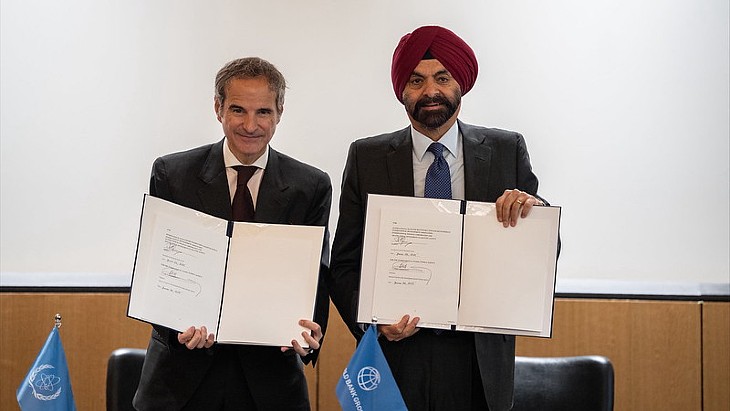HTR-PM heating project commissioned
.jpg)
The project uses high-temperature steam extracted from the HTR-PM's steam system to heat water in a heat exchanger. This high-temperature water flows to the heat exchange station in the municipal and power station energy areas and undergoes secondary heat exchange to become residential heating.
The heating pipeline was completed on 22 March and the project was connected to the heating grid on 27 March.
China Huaneng noted the project will add an additional 190,000 square metres of heating area, which can meet the clean heating needs of 1850 households. It can replace 3700 tonnes of coal every heating season and reduce carbon dioxide emissions by 6700 tonnes.
The company said the milestone marks "the first time that a fourth-generation nuclear energy heating system has realised heating for urban residents, and a breakthrough in the comprehensive utilisation of fourth-generation nuclear energy."
The HTR-PM - the world's first pebble bed modular high-temperature gas-cooled reactor - features two small reactors (each of 250 MWt) that drive a single 210 MWe steam turbine. It uses helium as coolant and graphite moderator. Each reactor is loaded with more than 245,000 spherical fuel elements ('pebbles'), each 60 mm in diameter and containing 7 g of fuel enriched to 8.5%. Each pebble has an outer layer of graphite and contains some 12,000 four-layer ceramic-coated fuel particles dispersed in a matrix of graphite powder. The fuel has high inherent safety characteristics, and has been shown to remain intact and to continue to contain radioactivity at temperatures up to 1620°C - far higher than the temperatures that would be encountered even in extreme accident situations, according to the China Nuclear Energy Association.
First concrete for the demonstration project was poured on December 2012, with the operating permit granted in August 2021 and the plant connected to the grid in December 2021. It reached its initial full power in December the following year and was declared to be in commercial operation in December last year.
The project is a collaborative effort involving Tsinghua University as a technical leader, responsible for research and development and main components and systems design, with China Huaneng Group as the owner and operator of the plant, and China National Nuclear Corporation as the engineering, procurement, and construction contractor and fuel manufacturer.
The HTR-PM follows on from China's HTR-10, a 10 MWt high-temperature gas-cooled experimental reactor at Tsinghua University's Institute of Nuclear and New Energy Technology, which started up in 2000 and reached full power in 2003. Beyond the HTR-PM, China proposes a scaled-up version - HTR-PM600 - with one turbine rated at 650 MWe driven by six reactor modules.
_92619.jpg)


_84504.jpg)





..._58412.jpg)

